THE RIGHT APPROACH
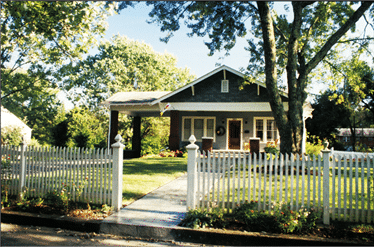
Is the entry to your home everything it could be? As a practicing landscape architect in Knoxville, TN with over 30 years of experience, I can honestly say I’ve seen a lot when it comes to good and bad garden design. The fact is, there isn’t much creativity left in the tank when most homeowners plan for how visitors will arrive at their front door. Ninety percent of the time they leave it up to the builder to snake a slightly curved 3’ wide concrete walk from the driveway to the front door. Now I’m not saying if you fall into this category, you should rip everything up and start over. But when it comes down to the arrival experience it’s very true what “they” say, “you only have one shot at making a good first impression.
There are three basic elements that factor into entry design. These are hardscape, planting, and lighting. The hardscape is exactly what you’re envisioning, the hard, written in stone paved portions of your circulation system. While your visitors’ walking experience is paramount, you also should consider where vehicles rest while not in motion. Consider having two bays for cars that are located in such a way that someone will not get blocked in and be able to scoot early if need be. If you’re starting a design from scratch, also consider a paving change that is different from the majority of the drive that can contrast and give a newcomer some clues on where to park and how to get to the front door. As you plan for these materials consider durability, texture, and very importantly, width. An entry walk that is generous in width, maybe 4 – 5’ wide, will allow two users to walk nearly side by side rather than single file.
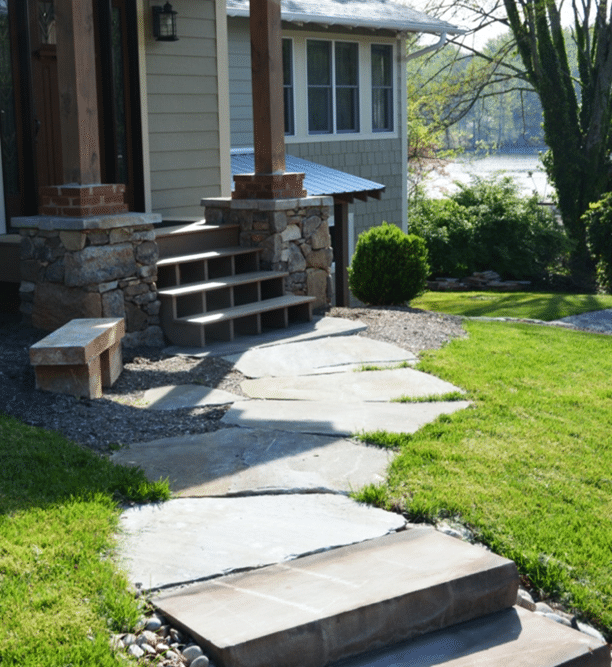
If your budget allows more than just concrete, consider stone or brick pavers. The very last thing you should do is use stepping stones or gravel as these are much more appropriate for garden paths rather than entries. Regarding the configuration of your approach, curves are fine but don’t get too carried away. When giving garden talks, I sometimes joke that I have a commandment when it comes to this. “Thou shalt not have more than two radial turns within a span of 50 feet”, or something like that. In contrast with the ubiquitous curved walkways, you also may want to consider a more geometric layout, especially if the architecture of your home leans more toward the contemporary style.
If you have an “L” shaped layout (see image), you can get really creative by taking advantage of the two side of this outdoor room which are already in place and finishing the rectangle for a beautiful and inviting entry garden rather than just a walk with some token plantings.
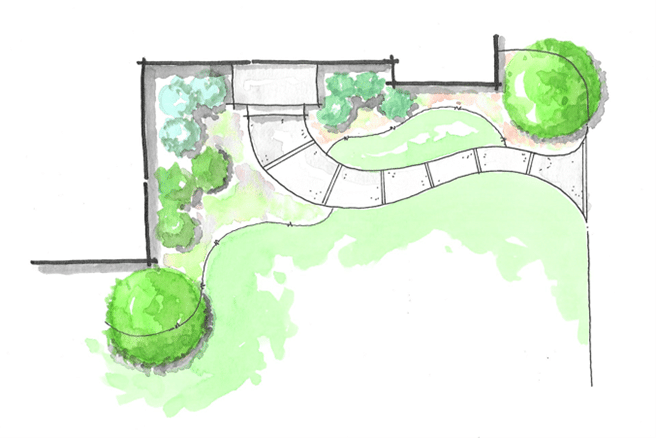
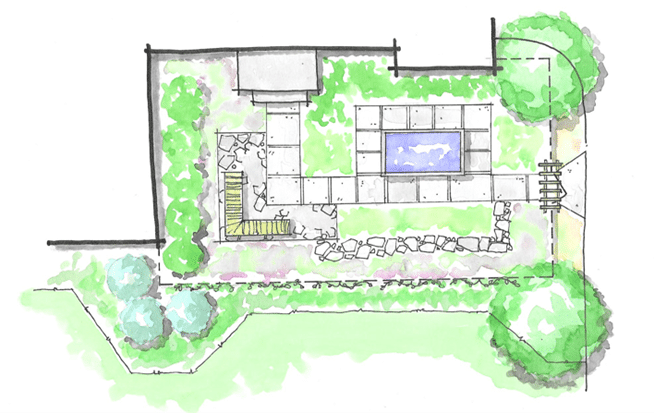
Comparison between a “typical” entry and a creative “entry garden”
Speaking of planting, consider giving your visitors a splash of color or fragrance as they make their way to your front door. Some well-behaved perennials whose bloom times are stretched from spring to fall will break the monotony of the same old, same old foundation evergreens. Fragrant woody plants (plants considered shrub-like) may include summersweet clethra or sweet azalea. When planning your hardscape, you may way to think about a place or two where the paving expands to allow what are sometimes referred to as “pot ears”, places to place some containers that are not in the way of the traffic flow. These can host some dwarf lavender or even basil or mint to create an aromatic experience.
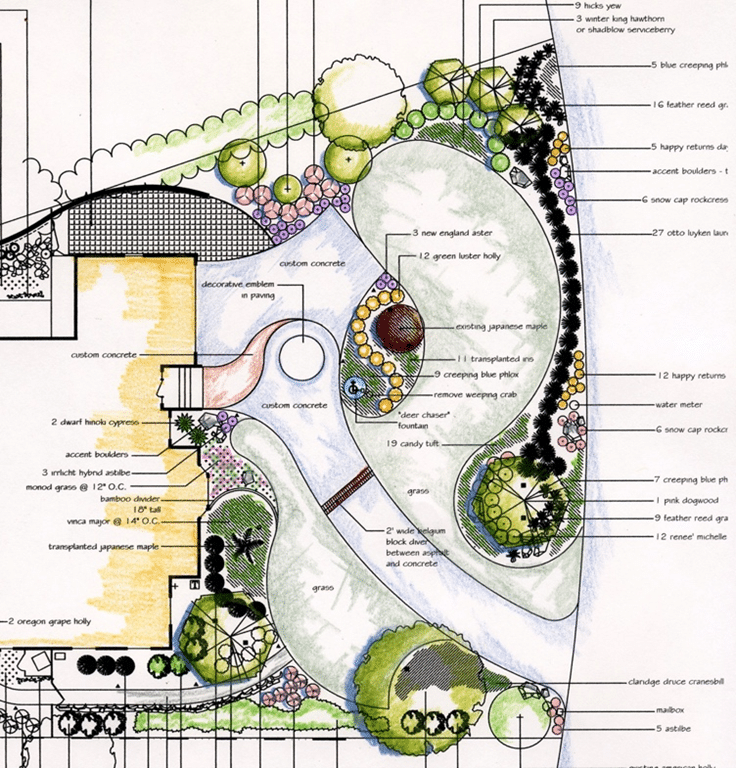
Lastly, although I’ve covered this extensively in another blog https://garrymenendez.com/outdoor-lighting-design-autumn-winter/ don’t forget lighting. And I’m not talking about those cheap do-it-yourself kits for $100 at the big box stores. Good lighting is an investment and each fixture can run close to $100 when you factor in the cost of a transformer and some wiring. But the effect will be worth it, especially when the days get shorter. With LED lights quickly replacing traditional lamps on the market, energy consumption is pretty minimal. Light fixtures can be grouped into three basic categories, all of which are needed to get a full effect. These are uplights or cans to graze the façade of the home or wash along a tree’s trunk, spotlights to showcase specimen plants of features, and path lights, which are the mainstay of good entry design. One mistake I see, at least in the Knoxville, TN area, are the use of too many fixtures with too much wattage. Most landscape architects would agree that “a little light goes a long way”. Especially when contrasted with an already dark yard.
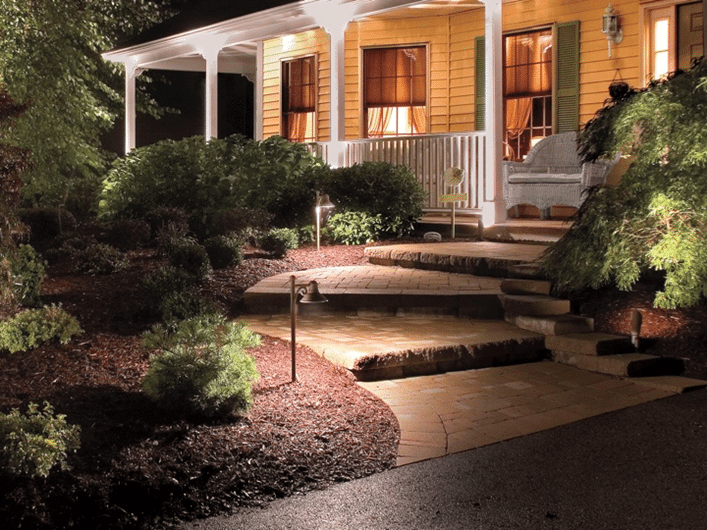
So, there you have it. A few things to consider to give your entry the makeover it deserves. Happy planning!





